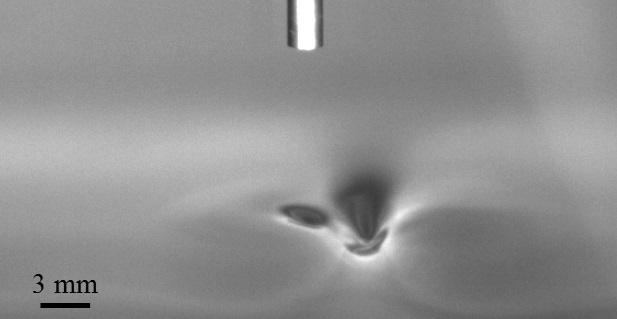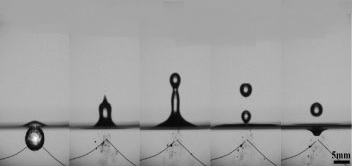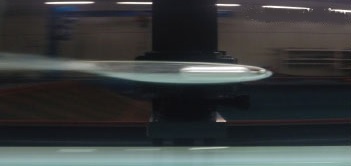█ Waves

Wind makes gravity–capillary waves on the surface of deep water when both gravity and surface tension are equally important. Because of the large steepness of gravity–capillary waves, the area of the air–sea interface is significantly increased compared to gravity waves. Increase of the interfacial area facilitates mass, momentum and energy transfer between air and water. In addition, the resulting small-scale roughness on the water surface provides important data in the area of microwave remote sensing where the microwave wavelength is comparable to the scale of the gravity–capillary waves. Apart from wind-generated gravity–capillary waves, these waves can be found on the surface of gravity waves whose slopes are generally moderate. When gravity waves are about to break, the crest is steepened and the curvature effect becomes so pronounced that gravity–capillary waves appear on the forward face of breaking gravity waves, usually in the form of spilling-type waves. We study on gravity–capillary solitary waves generated by a moving air blowing or a moving air suction.
• Application areas: Air–sea interface transfer, Ocean remote sensing, Wave breaking.█ Supercavitation
If a body moves in a gas, then the frictional drag would be lower than that of the same body moving in a liquid because the frictional drag depends on the dynamic viscosity of a fluid. For example, the viscosity of water is approximately one hundred times larger than that of air. In addition, if there exists a fore-aft pressure difference which is proportional to the fluid density, the pressure drag or the form drag on a body in a gas also would be lower than that of the same body moving in a liquid. For example, the density of water is approximately one thousand times larger than that of air. Therefore, during its motion, if a body is completely enveloped in a single large gaseous cavity, the associated total drag is expected to be significantly reduced. This phenomenon is known as supercavitation. We study on the ventilated supercavity formation in a free-surface bounded environment.
• Application areas: High-speed underwater vehicles, Air lubrication of a ship hull, High-speed torpedo█ Bubble jet

When an underwater bubble is generated close to a free surface, the resultant surface wave shows an overall rising jet-like behaviour. During this event, the initial spherical bubble expands, collapses and evolves into a non-spherical bubble (a dented sphere, a hemisphere, a spherical frustum or a toroid), migrating downwards away from the free surface; some parts of the bubble are disintegrated and are left behind. The overall behaviour of the bubble and the surface wave altogether can be understood in the context of the action-reaction momentum principle. We study on jet-like surface waves generated by an electric-spark-generated underwater bubble.
• Application areas: Jet printing, Droplet separation, Micro-surface cleaning, Laser-based printing techniques, Underwater explosions█ Voltex-wave interacion

When a fully submerged horizontal circular cylinder close to a free surface moves horizontally below the free surface, concurrent vortex-shedding and surface-wave phenomena are observed. Associated with the vortex shedding, various surface-wave phenomena are observed; small-amplitude waves, surging breaking waves, collapsing breaking waves and straight-streamline jet-like flows over the upper surface of the cylinder etc. We study on the fluid mechanics around a circular cylinder close to a free surface.
• Application areas: Wave energy, Current energy, Offshore structures, Underwater cables
